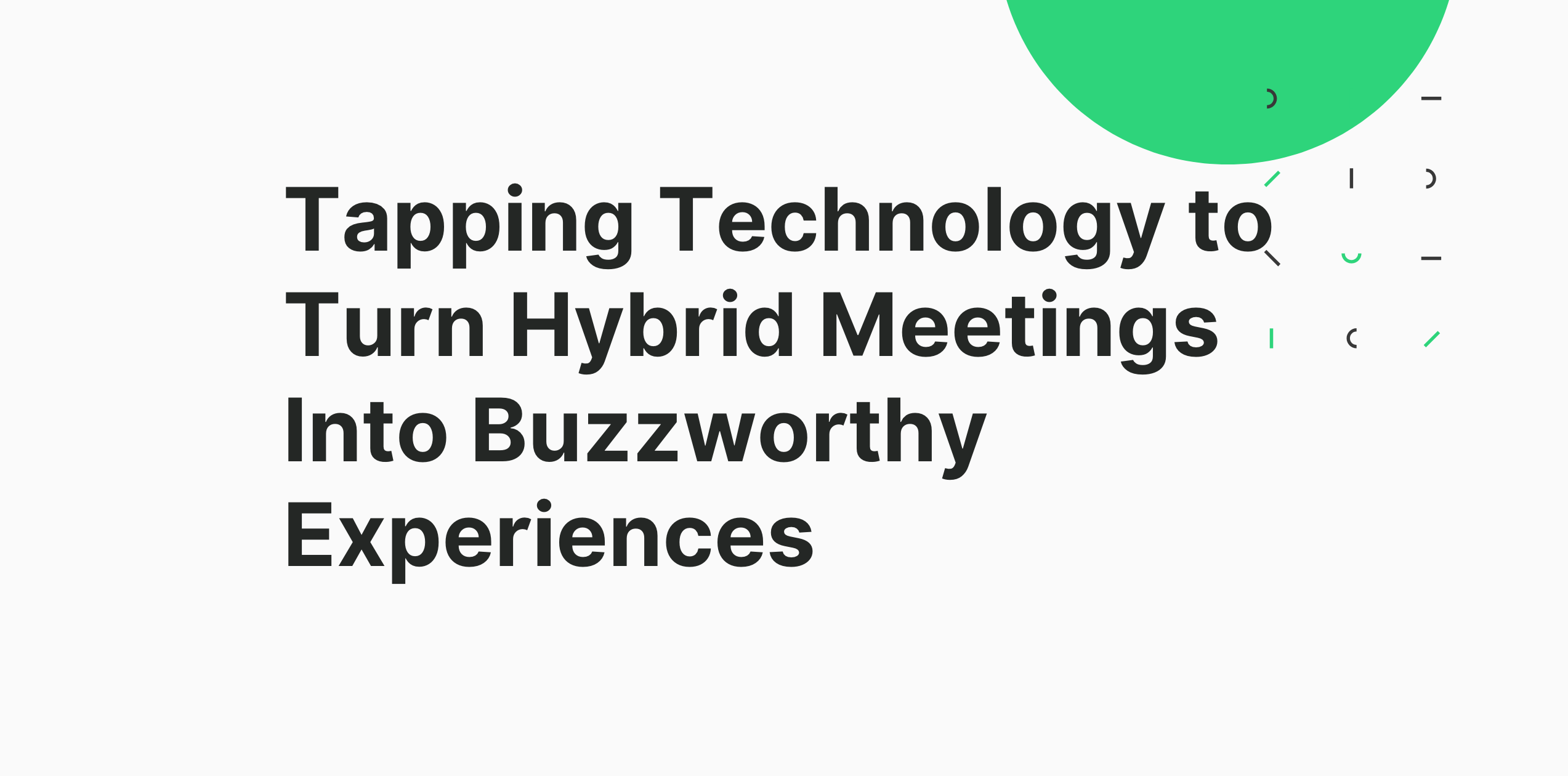How can you regenerate interest in a meeting that continually fails to engage attendees? Creating a hybrid event could be a solution, explained Toby Lewis, founder of The Live Group, a full-service events company based in the U.K.
Lewis kicked off “Using Hybrid Events to Create Buzzworthy Experiences,” a session at the PCMA Convening Leaders conference in January in Vancouver. He described how a client’s corporate meeting — mandated by management to be held four times a year — had devolved over time into an event series that had very poor attendee engagement. But that began to change after two alterations to the program.
First, the conference was reinvented as a hybrid event: attendees had the option of participating online via webcast, appealing to participants who appreciated the convenience of not having to travel to the meeting. The other change was that attendees could give their suggestions for topics and speakers right on the event’s web page, ultimately driving more relevant and engaging content for each event.
“Watching a webcast is not for everybody,” Lewis acknowledged, but people have preferred ways of receiving information and the hybrid format gives meeting organizers the flexibility to address those variations, he said. In the case of the corporate client who switched to a hybrid format, audience reach and engagement increased dramatically, including growth in the number of onsite attendees, Lewis said.
“The important thing is to think about content — what it should be and how to deliver it in the best way — before you do anything else,” he advised. “It’s too late to implement technology most effectively if it’s something you do after you lock in a venue and budget your food and beverage. Use digital technology to steer your event.”
In the second half of the session, Stefania Conti-Vecchi, founder of EVENTagist and an international speaker on creating innovative meetings, started off by giving an overview of key roles in creating highly engaging hybrid events.
Social media managers drive discussion and sharing on social media by remote participants, she said, pointing out the importance of having a hashtag devoted specifically to virtual part of the hybrid meeting. The virtual MC provides continuity and clarity for remote participants, especially when there are breaks in the live program. Breaks are a good time for the virtual MC to do a behind-the scenes-tour of the conference or a Q&A with speakers for remote attendees, she said.
Conti-Vecchi also demonstrated several new tech tools, showing how they could increase engagement and virtual participation. These included:
Sli.do: a web-based, audience-interaction tool for live events. Attendees, including remote participants, enter a code via their smartphones, tablets or computers, and then use their devices to ask and answers questions. The tool offers three views: one for attendees, one for administrators (allowing organizers to moderate incoming questions) and one for presentation (displaying top questions or live results to the entire audience).
MeetingPulse: This is another web app for live Q&A, polls, feedback, and surveys. Like Sli.do, no download or installs are required. Attendees simply click on a link sent to their smart devices.
Kubi: Billed as “an affordable telepresence solution,” Kubi is a motorized stand for tablets that lets a remote person look around the physical conference room. The remote operator uses a simple web-based interface to manipulate the stand holding the tablet. Conti-Vecchi pointed out that the Kubi stands are very popular in telemedicine and distance learning.
Telepresence robot: This works much as the Kubi but can move around environments, rather than sitting on a tabletop. There are several models on the market, including one offered by Double Robotics that sells for $2,500. Basically, a tablet (like Kubi, the customer supplies the tablet) sits atop a pole that connects to a Segway-like base. Telecommuters so far are the biggest users of this product, but it’s also being used to attend meetings and trade shows, giving new meaning to “virtual attendee.”
